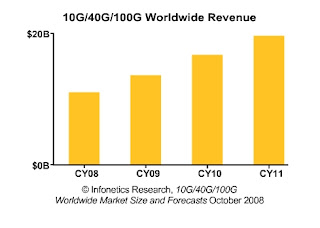 It would be hard to overestimate the impact the Apple iPhone has had, as a business innovation, for AT&T, in ways that have nothing to do with device features, user interface or changes in user behavior. The iPhone seems to have a significant role in boosting AT&T's wireless market share, wireless data subscriptions, service upgrades, floor traffic, sales close rate and even sales of other smart phone devices and data plans.
It would be hard to overestimate the impact the Apple iPhone has had, as a business innovation, for AT&T, in ways that have nothing to do with device features, user interface or changes in user behavior. The iPhone seems to have a significant role in boosting AT&T's wireless market share, wireless data subscriptions, service upgrades, floor traffic, sales close rate and even sales of other smart phone devices and data plans.When AT&T launched the iPhone 3G on July 11th, it activated 2.4 million iPhone 3G units, 40 percent of them to customers who were new to AT&T. Perhaps somebody else knows the answer to this question, but I am not aware this ever has happened before: that a single device has lead to such a gain in market share in such a short time.
It is possible, though unlikely, that some of these buyers were "first-time" mobile phone buyers. In all likelihood, however, virtually all these new buyers were defecting from another mobile provider.
The iPhone 3G helped drive two million total net adds in the quarter, 1.7 million of them post-paid, making this the best retail post-paid net add quarter in our company’s history," according to AT&T Mobility and Consumer Markets CEO Ralph De La Vega.
But AT&T executives long have expected a "halo effect." The thinking has been that some, perhaps many, prospects would be drawn in to look at the iPhone, but ultimately would choose another device. That indeed seems to have happened.
Same-store traffic was up 15 percent versus the third quarter last year and two thirds of third quarter post-paid net adds chose integrated devices (smart phones with either a qwerty or touch-screen keyboard).
More than 40 percent of customers upgrading their current plans purchased an Internet data plan for the first time, de la Vega says.
The net present value of a iPhone subscriber, is more than two times the NPV of AT&T's average post-paid subscriber. NPV is a way of accounting for total cash flows over time, discounted for the cost of borrowing or investment to create the cash flow.
The percentage of post-paid subscribers who have an integrated device doubled over the past year to reach 22 percent of all devices in use. The number of 3G devices in the base also has grown dramatically from around seven million a year ago to more than 17 million at the end of the third quarter.
The third quarter also was AT&T's best laptop connect quarter ever, and the company has more than doubled its 3G laptop connect base over the last year. AT&T now has nearly 5.9 million broadband speed laptop cards, dongles and integrated devices in service, though it does not break out the percentage of dongles and cards.




